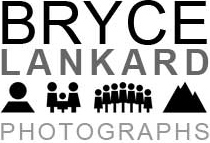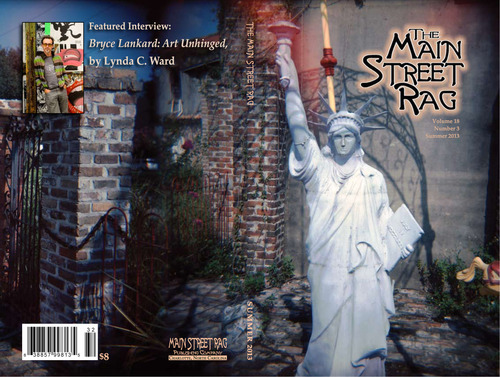I am honored to be featured in the Summer 2013 issue of the arts and literary magazine, The Main Street Rag. In addition to giving me this lovely wraparound cover, their is a wonderful intro and interview by Lynda Ward, and a whole host of images, some rarely seen.
MSR is currently undergoing a bit of a website overhaul, so an online version is not available just yet, but I will repost when it is. In the meantime, I hope you consider visiting their site, and I will include a small excerpt here. Enjoy:
Bryce Lankard: Art Unhinged by Lynda C. Ward
LCW: Two of your pre-Katrina photographs from Land of Dreams are published here: Two Kids on A Car and Basin Street.
BL: Both are emblematic of what I was trying to show. New Orleans was very poor and, yes, some people were living in squalor. But there was hope and a certain joy to life and living that was beautiful. These boys are playing in a junkyard, yet they are happy. They embrace the spirit of New Orleans. Basin Street reveals my love of New Orleans’ aesthetic of decay. The city is sub- tropical. Things peel and rot very quickly. Not a lot of money to keep things up. Yet literally that very street, Basin Street, is the birthplace of Jazz.
LCW: In terms of your 9/11 photographs, two images, Pigeon Man and Dalmatian, are perhaps good examples of how photography can freeze a moment and contain a story.
BL: I lived in New York City on 9/11, but I was in eastern Europe for a wedding. Ironically I photographed Pigeon Man at almost the exact moment the planes hit the towers, just before 3 o’clock in the afternoon in Poland. I remember. I even wrote it in my photo journal. I was walking back from touring Krakow. It was very quiet and not a lot of activity. When I came to the main square, I saw this guy feeding pigeons. They were all over him. But it was this oddly peaceful moment. A few minutes later, when I got back to the hotel, I realized what had happened. That is when the Europe trip ended for me. Of course I was stuck in Europe and had to go on with my trip because I had no choice, but everything after that, everything I saw touched my sense of disconnection, loss, and fear: from shooting the Jewish cemetery, which was beautiful yet haunting, to this Dalmatian left outside of a café, staring in the window waiting on his owner. He seemed all alone. It struck me. I felt alone too and was waiting: on news of loved ones and others. Yet like this dog I couldn’t come in, I had to stay where I was and wait.
LCW: Your nostalgia—a desire to hold, in your heart, to a time that has passed—is one of the things that makes your work unique and empathetic, for example your photograph Playground, China Lake.
BL: Many images from my Blink of an Eye deal with childhood or youth or summertime because they are things you think will last forever then—wham!—they’re gone. I just turned 50. I thought I would be young forever, now mortality is creeping up on me. I took the Playground image about twenty years ago. I was nostalgic even then. I was reflecting on my childhood, thinking about the passage of time: how time moves on, how we grow old. I went on a trip by myself to find the place I was born, a place I lived for only a few months before my parents moved to North Carolina. Suddenly I’m there, in a deserted town on the edge of Death Valley. There’s this empty playground in the middle of a cracked-earth desert. The houses were uninhabited. No more kids to play. This really affected me. I held on to the image and idea. So when 9/11 and Katrina happened, I wanted to explore and express it. Today I’m still exploring change, transition, and time passing. Transience, my current project, is a work-in-progress and can be seen on my website [www.BryceLankard.com]. In Transience I continue to examine change, transition, movement through time, progressions—the sense of how a moment is so brief and never the same thing twice.

